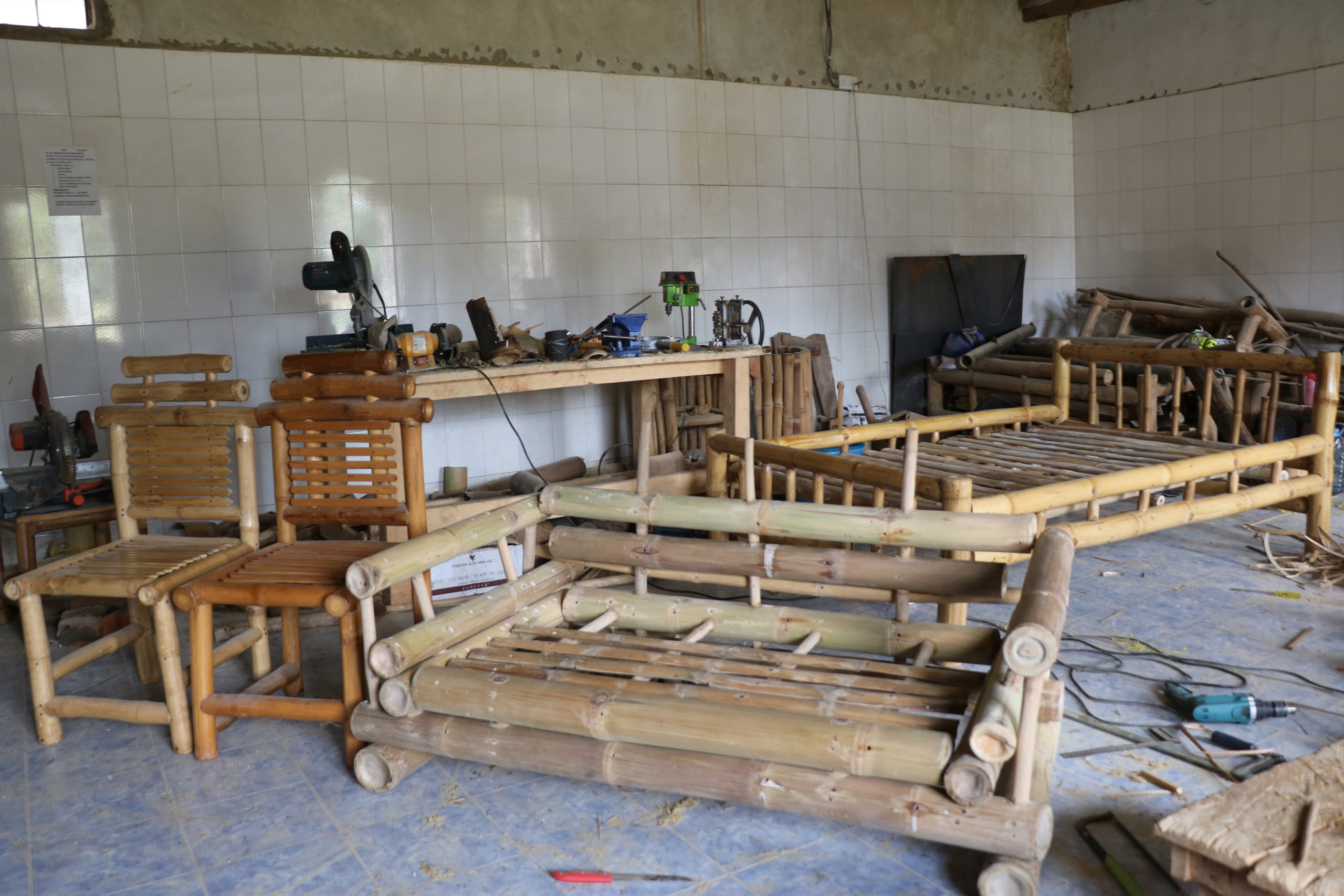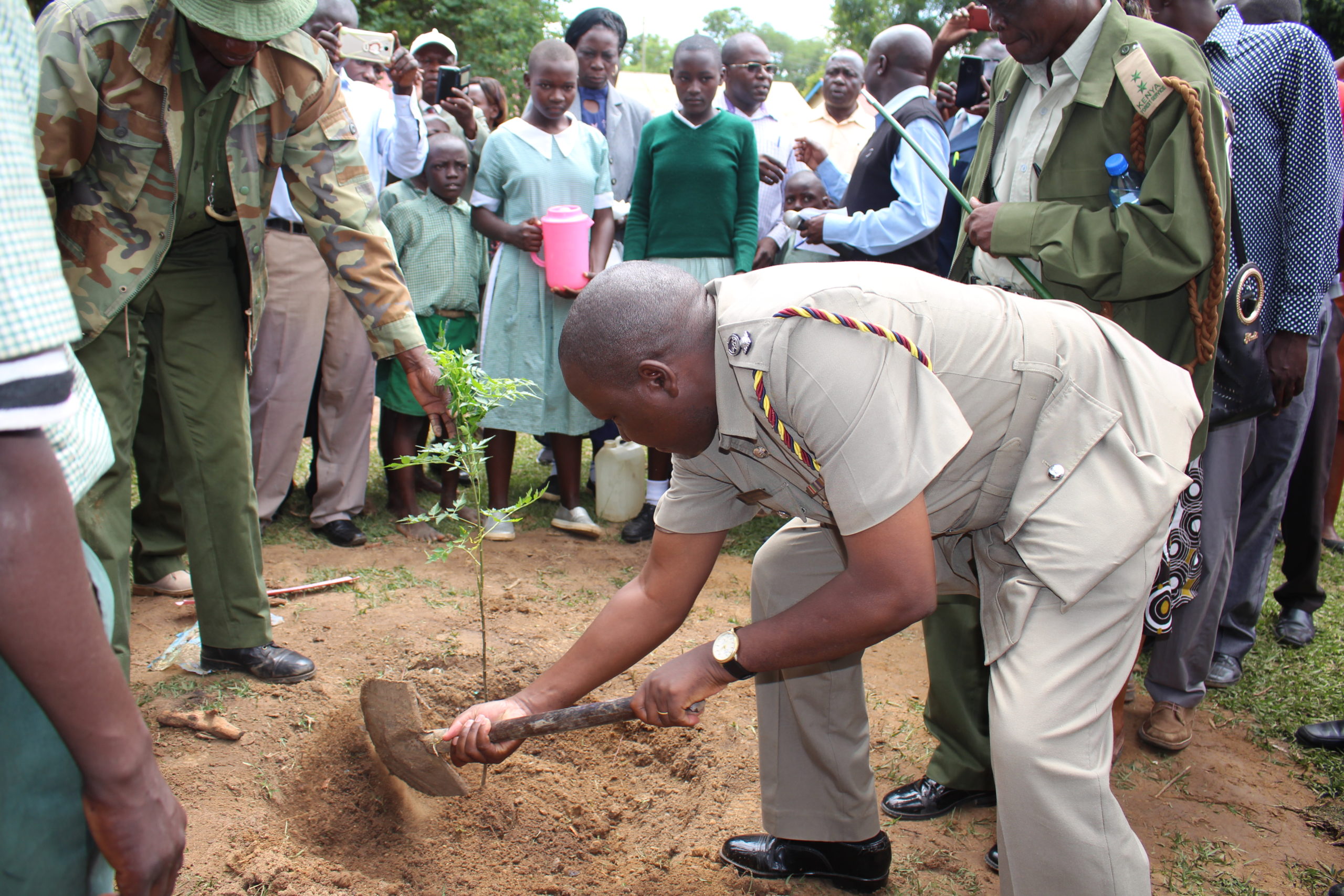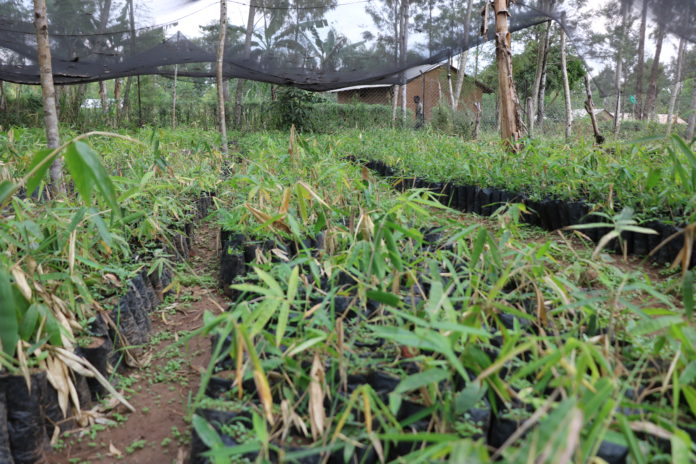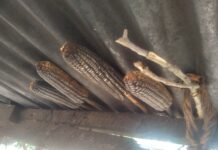By Okong’o Oduya
Busia County, Kenya: Busia County is enjoying the economic benefits of bamboo farming. With its farming taking place in various parts of Busia, the potential markets in the construction and furniture manufacturing sectors are gaining momentum.
The tall fast-growing woody plant is also used as a control measure for soil erosion, protecting water catchments areas as well as mitigating against climate change effects.
Busia County is also embracing the plants for other uses.
Through the department of forest, Busia County for the last year has planted more than 200, 000 bamboo seedlings with aim of improving the forest cover in Busia from one percent in 2014 to slightly above 5 percent forest coverage besides improving life the standard for those venturing in the farming.

According to Macodero Sylvester, the Ecosystem Conservator in Busia County, Butula, and Nambale Sub-Counties have been at the forefront in promoting bamboo planting.
He says with the help of Kenya Forest Research Institute (KEFRI) through Eco-green, an environmental body based in the county, the bamboo growing initiative along the river banks and wetlands in Busia will help in soil conserving and flood controlling in the County during rainy seasons.
Markets for Bamboo products are largely underdeveloped due to the lack of mature domestic markets for products, as well as lack of consumer awareness and confidence.
“The demand for bamboo-made products is emerging to be an alternative to traditional timber in Kenya. The plant has multiple uses. It is a raw material for making clothes, accessories, furniture, diapers, utensils, and musical instruments especially in developed countries such as China.” He said.
Macodera is calling upon the communities in the county to embrace bamboo farming as a way of promoting their livelihoods as well as promoting the wellbeing of the ecosystem.
Besides the bamboo farming initiative, the conservator further noted that from last year the department in partnership with other faith-based organizations, learning, and other financial institutions have planted more than 500, 000 trees across the county.
He however urged farmers and homeowners in the County to make sure their homes and farms are covered with at least 5 percent and 10 percent respectively.
Ikonzo Water Resource Users Association(WRUA) has planted more than 3,000 bamboo trees within riparian lands across Butula, Nambale, and Matayos sub Counties in Busia County for the last year as a way of protecting water springs, streams,s, and swamps in their respective areas.

According to Peter Were, the WRUA chairman some of the streams and water springs where they come from have dried others are drying up and the only way to prevent further damage in these areas is by planting the grass.
They plant seedlings to plant and distribute others to their partners who help in spreading the plant to other areas in the County.
“We plant bamboo seedling then plant the seedlings among our members then distribute others to our partners’ across the county as a way of taking care just to make sure that we take care of our wetlands and springs. We have partnered with Ecogreen and Kenya Forest Services in Busia and planted bamboo trees to at least 25 water springs in the county,” said Were.
Were says the bamboo planting initiative will not only improve the forest cover in the county, the plant itself is a source of income to those who have planted it adding that after maturity it is harvested and used to make furniture and other household goods.
Catherine Akuku, a youth and an environmentalist, and a member of Ikonzo WRUA in Busia County say farmers who have embraced bamboo farming are going to rip big in the future adding that bamboo product on the market is gaining momentum.
Akuku notes that many households in Kenya are embracing furniture and utensils made from bamboo.
“The market for bamboo products is readily available, Other than selling the seedlings alone farmers are getting innovative by making and selling bamboo products. The best examples of these products include bamboo matchsticks, toothpicks, bamboo charcoal, and furniture. You can also create nice art products with it and start selling to individuals and corporate in your area,” she said.
According to the studies, bamboo grows really fast at an estimated rate of 1.2 meters a day, which makes it a perfect buffer against climate change.
Environmentalists have been mobilizing bamboo planting to help in the fight against climate change globally. The tree does well in all areas, but different varieties survive better in specific agro-ecological zones. There are 1,250 different species of the plant. As a source of livelihood, bamboo can be used to make hundreds of products among them furniture, fabrics, papers, processed flooring, and climate-smart houses.
Currently, bamboo covers about 329,325 acres of land, with 95 percent concentrated in mountain ranges and gazette forests including Aberdares range, Mau forest, and Mount Kenya, Mount Elgon, and Cherangany hills.
The ministry has formulated a National Bamboo Policy 2019 to help propagate this agenda. The policy seeks to promote the large-scale growing of bamboo for several reasons among them, economic sustainability, green growth, promoting a clean and healthy environment as well as easing pressure on the forests.














